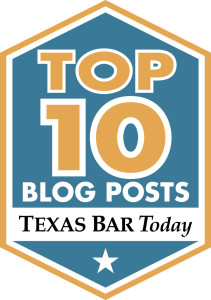
In J.A. Green Development Corp. v. Grant Thornton, LLP, et al., the Dallas Court of Appeals held that limitations begin to run for claims arising from professional negligence in an IRS administrative proceeding as soon as the client learns the IRS disagrees with the advice.
The allegations were that Green hired Grant Thornton and Akin Gump in an IRS audit concerning Green’s participation in a “distressed debt strategy” that was sold to Green by prior advisors. Green alleged that Grant Thornton and Akin Gump told Green that the strategy was likely to be upheld as legal, causing Green to reject a settlement offer by the IRS. In December 2008, the IRS disagreed and issued a report disallowing the loss and imposing substantial penalties. Green alleged that Grant Thornton and Akin Gump then backed away from their prior advice. Six months later, Green sued the original advisors who sold it the tax strategy, but Green continued to retain Grant Thornton and Akin Gump to handle the appeal of the IRS decision. When it later became clear the appeal of the IRS decision would go poorly, Green settled with the IRS for more than the offer it rejected. It then sued Grant Thornton and Akin Gump.
The Dallas Court of Appeals affirmed summary judgment in favor of the defendants. The question was whether limitations started running in December 2008, when the IRS issued its first report indicating that the loss would be disallowed, or in November 2009, when it became clear the appeal of the IRS decision would fail. “[A] cause of action accrues when a wrongful act causes some legal injury, even if the fact of injury is not discovered until later, and even if all resulting damages have not yet occurred.” Green had to concede that it was first injured when it was sold the tax strategy because it had sued the promoters of the strategy before the administrative appeal failed. Green claimed the injury caused by Grant Thornton and Akin Gump was distinct from that caused by the original advisors, but the Court of Appeals held that Green suffered a single continuous injury that Green knew of when it received the IRS report disallowing the claimed loss. The Court of Appeals also held that the Hughes Tolling Rule, which tolls limitations in legal malpractice cases arising from litigation until the litigation is resolved, does not apply to administrative proceedings.
Congratulations to 600commerce’s own David S. Coale, who argued the case on appeal for Akin Gump, and to Trey Cox and Chris Patton, who were trial counsel.
JA Green Development v Grant Thornton




